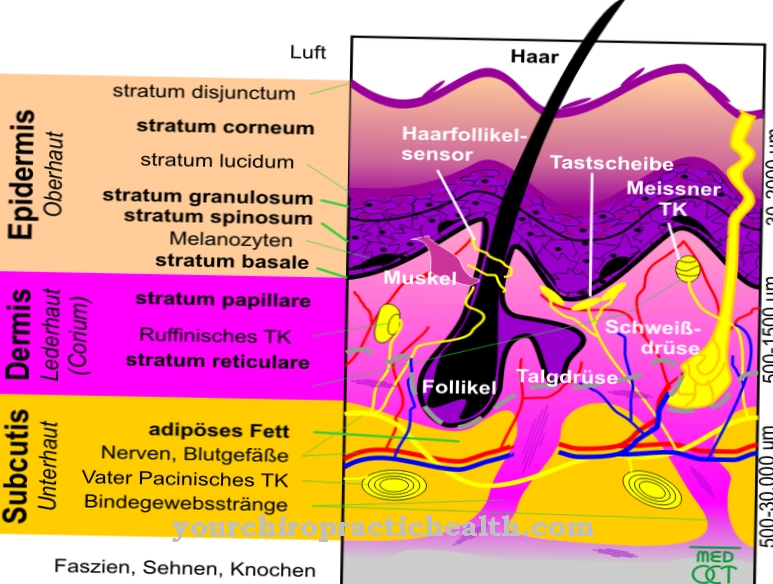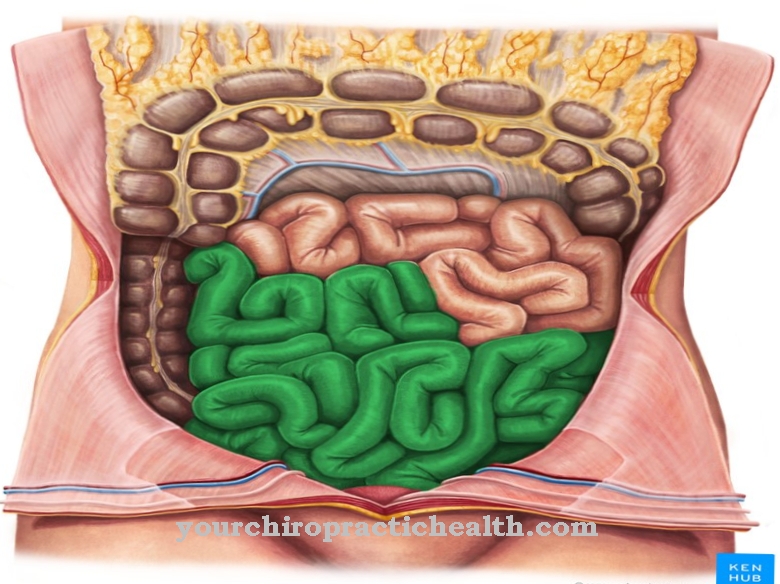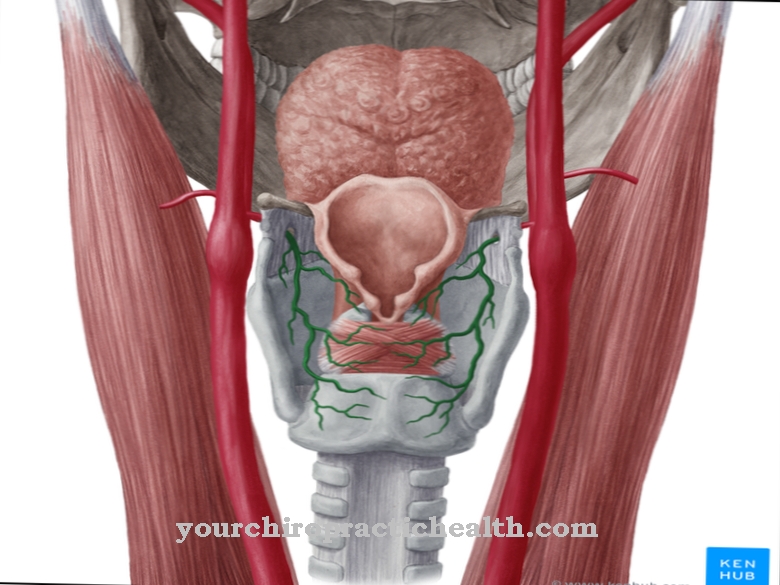Fascia, which are also called Muscular skin are found throughout the human body. It is a fibrous, collagen-rich tissue that, if hardened, can lead to pain in various parts of the body such as the neck, back or stomach.
What is the muscular skin?
The name Fascia comes from the Latin word Fascia ab, which means ribbon or bundle. In addition to fibrous connective tissue, flat connective tissue structures are also included Muscular skin.A distinction is made between three groups of fasciae: the superficial fascia, the deep and the visceral fascia.
- Superficial fasciae are part of the subcutaneous tissue. They connect organs and tissues with one another and envelop blood vessels, nerves and glands.
- Visceral fascia provide the suspension and protection of the internal organs. Important organs have their own fascia tissue, such as the meninges for the brain, the pericardium on the heart or the pleura of the lungs.
- Deep fascia envelops individual muscles and muscle groups as well as bones and joints. Colloquially, fasciae are also referred to as connective tissue.
Depending on the position and the associated task of the fascia, these are elastic to different degrees. For example, the deep and visceral fasciae are less flexible than the superficial fasciae. On the other hand, the deep fasciae are very resilient to tensile forces thanks to a high proportion of collagen that is tightly woven.
Anatomy & structure
Fascia are distributed like a network throughout the body, connecting and enveloping muscles, organs, bones, blood vessels and tendons. The superficial fasciae, too Superficial fascia or called body fascia, lie under the skin, the visceral and deep fascia, too Fascia profunda called, permeate the entire human body.
They consist of a connective tissue structure, the essential components of which are elastin, collagen and water. They are traversed by lymphatic channels through which lymph fluid is transported. Fascia envelops individual muscles or groups of muscles. The muscles, which consist of many muscle fibers, are encased in what is known as the epimysium. This in turn is enclosed by fascia.
The thin, white fascia layer is a maximum of three millimeters thick and contains peripheral nerve endings. Through the pain and sensory receptors they contain, fasciae react to pressure, vibration and temperature and can perceive changes in movement and the chemical environment. Fascia are often the origin or attachment point of muscles. If the body moves too little, fasciae can stick together, which can lead to small tears in the fasciae.
Function & structure
The importance of fascia was only recognized in the past few years. It is not only about filling material of the body, but fasciae are involved in many important processes in the body. They have important functions for the stability, mobility and maintenance of the body.
The fasciae hold all organs in the place intended for them, whereby the position can be varied within a certain range if necessary due to the high viscoelasticity of the fasciae. This enables, for example, a shifting of the organs during breathing or an adjusted position in the case of pregnancy. Fascia give the muscles their shape, determine and maintain the position of the muscles, provide firmness and support muscle contraction.
However, fasciae can not only help the muscle to contract, but also pull themselves together. In addition, the fasciae separates different muscles so that muscles that are close together do not influence their function. At the same time, fasciae can transfer forces between different muscles and to the skeletal system, thus ensuring interaction and smooth movement of the joints.
Different body cells can communicate with each other via the fasciae. They have a high ability to bind water and thus also serve as the body's water reservoir. The superficial fascia in particular can store fat and thus serve as an energy store.
Fasciae have a buffer function and cushion shocks when moving. Ligaments that stabilize joints are also made of fascia tissue. They also form a protective layer against the penetration of foreign bodies and contain specific cells of the immune system.
You can find your medication here
➔ Medicines for muscle weaknessIllnesses & ailments
In young, healthy people, fasciae have high elasticity and mobility. This decreases with age or can be limited by lack of exercise or injury. In the event of an accident, such as a sprain or a broken bone, fasciae can be twisted or split open.
Pain and restricted mobility are the result. Fascia can also be injured in cuts or operations.Sticky or hardened fasciae can lead to joint pain, to pain in the neck, shoulder and back area, but also to abdominal pain or indefinable pain. Fascia are also involved in sports injuries such as the so-called tennis elbow.
In such cases, the fasciae have lost their elasticity as a result of constant, excessive stress or insufficient movement and restrict the mobility of the affected muscles. Due to incorrect posture, the fascia tissue can shift unfavorably and not perform its function as intended.
In such cases, the lymph flow between the muscle and fascia is disturbed and the fascia cannot slide, which is why the fasciae stick together. The lymphatic fluid transports the body's build-up and breakdown products, which is hindered when the fasciae stick together and the transmission of force through the fasciae.
In addition to pain, numbness or restricted mobility of the body can occur. Fasciae can swell when injured or stressed and thereby pinch nerves, which also leads to pain.



























